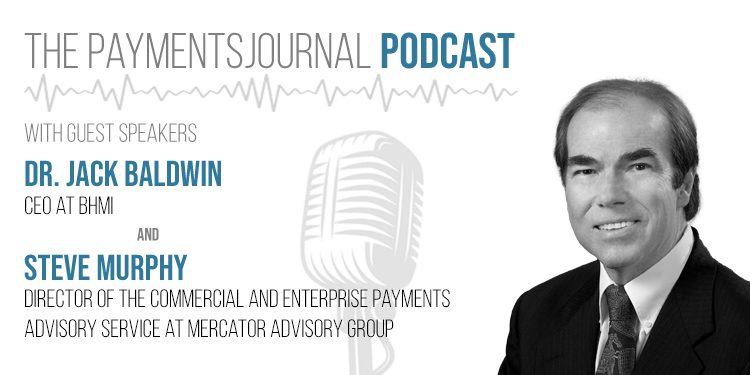As consumers flock to digital and P2P payment methods, the need for more robust messaging has come to the forefront. The top-line messaging standard for electronic data interchange (EDI), ISO 20022, describes and transmits information about financial services and includes both a metadata repository and a maintenance process for the repository content. If the previous sentence dried your eyes up just a little, you might wonder: What is all the fuss around a messaging standard?
To learn more about what ISO 20022 actually is, what it does, why companies are implementing it, and how it is being used, PaymentsJournal sat down with Jack Baldwin, Chairman of BHMI, and Steve Murphy, Director of Commercial and Enterprise Payments Advisory Service at Mercator Advisory Group.
Powerful design: the exacting detail of data enrichment
“The primary power of the specification is attributable, at least in part, to how it was designed,” Baldwin began. There are around 21 different domains of business processes specified in the ISO 20022 standard, along with the messaging and data necessary to support the different processes. Not all financial business services have the same profiles, however. Fee collection has a different profile than foreign exchange trade, which has a different profile than securities clearing, or card administration, or ATM management. Moreover, within each of those categories are subsections and each require the transmission of different information.
The messaging standard manages all aspects of payments messaging at a granular level. “ISO 20022 messaging includes additional detail to help remove ambiguity from the interpretation and processing of these messages,” Baldwin explained. “This is basically referred to as data enrichment.” Whether you are dealing with reconciliation, settlement, money laundering, or fraud detection, the extra attributes included in the ISO 20022 messaging standard improve processing transparency and help to dramatically reduce potential issues with the payment experience.
This sharply contrasts with the experience of using an older standard such as ISO 8583, a popular transaction protocol that has been used for decades. The operative difference lies in how much information the data field can support. “Because of the [ISO 8583] standard, there will be data that [transaction partners] want to transmit, but there’s not really a data field to support it,” clarified Baldwin. Instead, two parties might work out an arrangement between them and use a different unused data field that can support the amount of information. Skirting the protocol to accommodate extra data leads to a cascading set of problems, such as needing to adjust for every new communication and constantly swapping out data fields as needed. “[ISO 20022] obviates the necessity of trying to override or misuse the protocol,” said Baldwin.
ISO 20022 – past, present, and future
The first iteration was published in 2004, and the second edition in 2013, which is the version now seeing widespread use. “The initiatives around ISO 20022 sort of coincide with real-time payment systems,” explained Murphy. “That’s really taken off in the last 6-7 years.” There are approximately 60 real-time payment systems across the globe, including recent implementations in Canada, Peru, Indonesia, Colombia, New Zealand, Singapore, Thailand, and more. ISO 20022 is the de facto standard for all of them.
Other high-profile use cases include:
- SWIFT – Conversion to ISO 20022 is expected by 2024 for all cross-border and B2B payment messaging, including partnerships with EBA CLEARING and The Clearing House (TCH).
- EBA CLEARING – Migration to ISO 20022 is underway with a current deadline of November 2022.
- The Clearing House (TCH) – Real-Time Payments (RTP) network and CHIPS clearing system are both en route to use ISO 20022 by mid-2022.
- U.K. Faster Payments Service (FPS) – Moving to ISO 20022 by April 2023.
- P27 Nordic – Cross-border payments for the Nordic regions already operate on ISO 20022.
- Bank of International Settlements (BIS) – Project Nexus cross-border payments will operate on ISO 20022 standard.
- Fedwire – One of two real-time gross settlement (RTGS) or wire systems, along with CHIPS, that plan to convert to ISO 20022 in the next several years.
- FedNow – Proposed to be operational in 2023, and will also use ISO 20022 specifications.
- Cuscal – Australian payments solution company uses The New Payments Platform (NPP), which has run on ISO 20022 since 2018, with support from BHMI.
- PayShop – Portugal-based payments institution has used ISO 20022 since last July with support from BHMI.
There are obvious benefits for this kind of harmonization in B2B, B2C, and P2P payments. “There really isn’t any recently developed financial services network that is not based on ISO 20022,” Baldwin summarized. The BHMI Concourse financial software suite acts as a comprehensive back-office module that, among other offerings that modernize electronic payment transactions, aligns companies with the ISO 20022 standard.
Begin the adoption process now!
The writing is on the wall: everyone is moving towards ISO 20022. This is easier said than done, however. In a perfect world, older financial service networks would have legacy carryover, but this does not necessarily happen. Old protocols have what Baldwin refers to as “logical tentacles” that stretch into other areas of the application set. “There is really no clear separation or delineation between internal and external data,” Baldwin pointed out. “This complicates adopting something like ISO 20022 as a standard.”
The good news is that it is designed to functionally support old data messaging standards, while still adding the extra attributes that resolve any potential ambiguity lurking in the contents of the data. The only drawback is that while integrating ISO 20022, any older messaging standard in use may not maintain the enriched data offered by the new standard, so until the switch is complete, there may be an interim period with some limitations. “The advice I would give is to implement ISO 20022 from the get-go,” Baldwin concluded.












